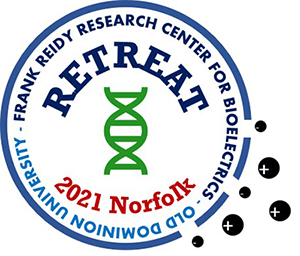Nanosecond Pulse Bursts for Neuron Stimulation
Document Type
Presentation
Publication Date
11-11-2021
Speaker Biographical Sketch

Mantas Silkunas worked as a Junior Researcher at the Lithuanian University of Health Sciences, Lithuania. Primary research topics: digestive system tumors response to treatments. M. Silkunas received Ph. D in biophysics from Vytautas Magnus University (Lithuania) supplemented previous Molecular Biology and Biotechnology education. During the study period, analyzed mechanisms of chemotherapy, electrochemotherapy ineffectiveness and possibilities to overcome it. Since 2020, as a Postdoctoral Research Assistant at Old Dominion University, Norfolk, VA, investigated the effects of nano-second pulse electrical field on plasma membrane permeability, repair/damage, and process visualization in excitable and non-excitable systems.
Category
Postdoc
Session
Medical Application
Format
In-Person
DOI
10.25776/qdny-p081
Conference Name
2021 Frank Reidy Research Center for Bioelectrics Retreat
Abstract
Nanosecond pulsed electrical field (nsPEF) is a novel approach for neuron stimulation however, applicability is limited due to the required relatively high electric field that could result in neuron damage. We reached the stimulation threshold using lower pulse amplitudes by applying a burst of multiple pulses (up to 4 MHz). Action potential (AP) in rat neurons in vitro was registered using a fluorescent probe, FluoVolt. We determined neuron excitation thresholds modulating burst parameters: number of pulses (1-1000), repetition rates (1 Hz-4 MHz) and duration (100 ns, 400 ns, 800 ns). Time-average electrical field values were used to compare nsPEF bursts and single pulse protocols. nsPEF burst exhibits lower time-average electrical field thresholds compared to single-pulse stimulations. Bursts of 100 ns pulses at 100 kHz for 100 µs caused neuron stimulation at 32.8 V/cm time-average electric field, where a single 100 µs pulse requires 165.7 V/cm, resulting in 80% reduction. Multiple stimulation and evaluation of corresponding AP trace shapes were used to identify neuron damage. µs pulses and nsPEF bursts at 250 kHz and above resulted in 100 stimulations without neuron damage. nsPEF bursts of lower pulse repetition rates required higher electrical field peak strengths, resulting in neuron damage visible as distorted AP trace or lack of excitation. Neuron stimulation can be achieved using nsPEF bursts that allow reducing electric field threshold without causing cellular damage.
Repository Citation
Silkunas, Mantas; Gudvangen, Emily; and Pakhomov, Andrei G., "Nanosecond Pulse Bursts for Neuron Stimulation" (2021). 2021 Frank Reidy Research Center for Bioelectrics Retreat. 8.
https://digitalcommons.odu.edu/bioelectrics-2021retreat/8
ORCID
0000-0003-3816-3860 (Pakhomov)



Comments